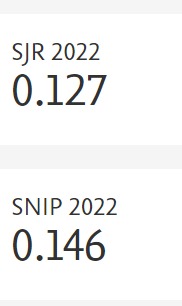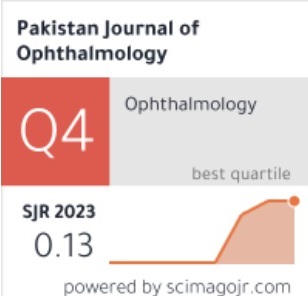A National Survey of Endophthalmitis Prophylaxis during Cataract Surgery in Pakistan: A 2020 Perspective
Doi: 10.36351/pjo.v38i1.1278
DOI:
https://doi.org/10.36351/pjo.v38i1.1278Keywords:
Acute postoperative endophthalmitis, Endogenous endophthalmitis, Postoperative complications, Surgical wound infection, Antibiotic prophylaxis, Cataract, Cataract Extraction, Ophthalmological Surgical Procedures, Health Care Surveys, PakistanAbstract
Purpose: To assess national endophthalmitis prophylaxis practice patterns during phacoemulsification surgery in Pakistan.
Study Design: Cross sectional survey.
Place and Duration of Study: Eye units registered with the British Pakistani Ophthalmic Society (BPOS) between September and November 2020.
Methods: A survey-based cross sectional study was conducted in Pakistan between September and November 2020. A proforma was designed using a survey client (Survey Monkey) and distributed to the eye units registered with the British Pakistani Ophthalmic Society (BPOS). The survey explored demographic factors, current antibiotic prophylaxis practice during cataract surgery and audit practice in Pakistan.
Results: A total of 339 respondents completed the survey. The survey was representative of ophthalmic surgeons working in the major provinces of Pakistan. A small majority of ophthalmic surgeons provided some form of routine antibiotic prophylaxis (n = 140, 53.8%). Povidone iodine 5% (PVP-I) solution on skin and in the conjunctival sac proved the most popular protocol (n = 163, 66.3%). This was followed by immediate postoperative topical antibiotics (n = 101, 41.1%). Intracameral antibiotic prophylaxis accounted for less than half of current antibiotic practice during cataract surgery in Pakistan (n=99, 40.3%). Most of the respondents did not conduct any audit regarding endophthalmitis (n = 119, 55.6%).
Conclusion: Our survey provides an up-to-date view on the state of antibiotic prophylaxis during cataract surgery in Pakistan and highlights several areas for improvement. This includes policy changes to increase adherence to gold standard antibiotic prophylaxis guidelines, improvement in transparency of surgical outcomes and to audit current postoperative outcomes.
Key Words: Acute postoperative endophthalmitis, Surgical wound infection, Antibiotic, Cataract, Pakistan.
Downloads
Published
How to Cite
Issue
Section
License
Copyright (c) 2021 Yarrow Scantling-Birch, Hasan Naveed, Hira Khan, Rashid Zia

This work is licensed under a Creative Commons Attribution-NonCommercial 4.0 International License.






